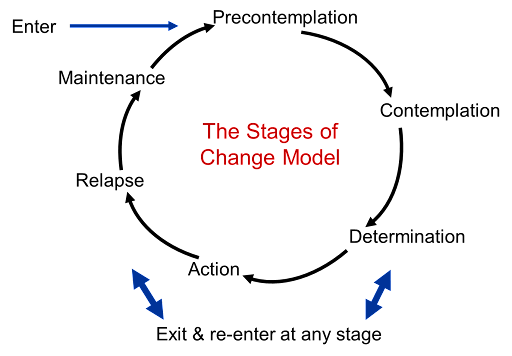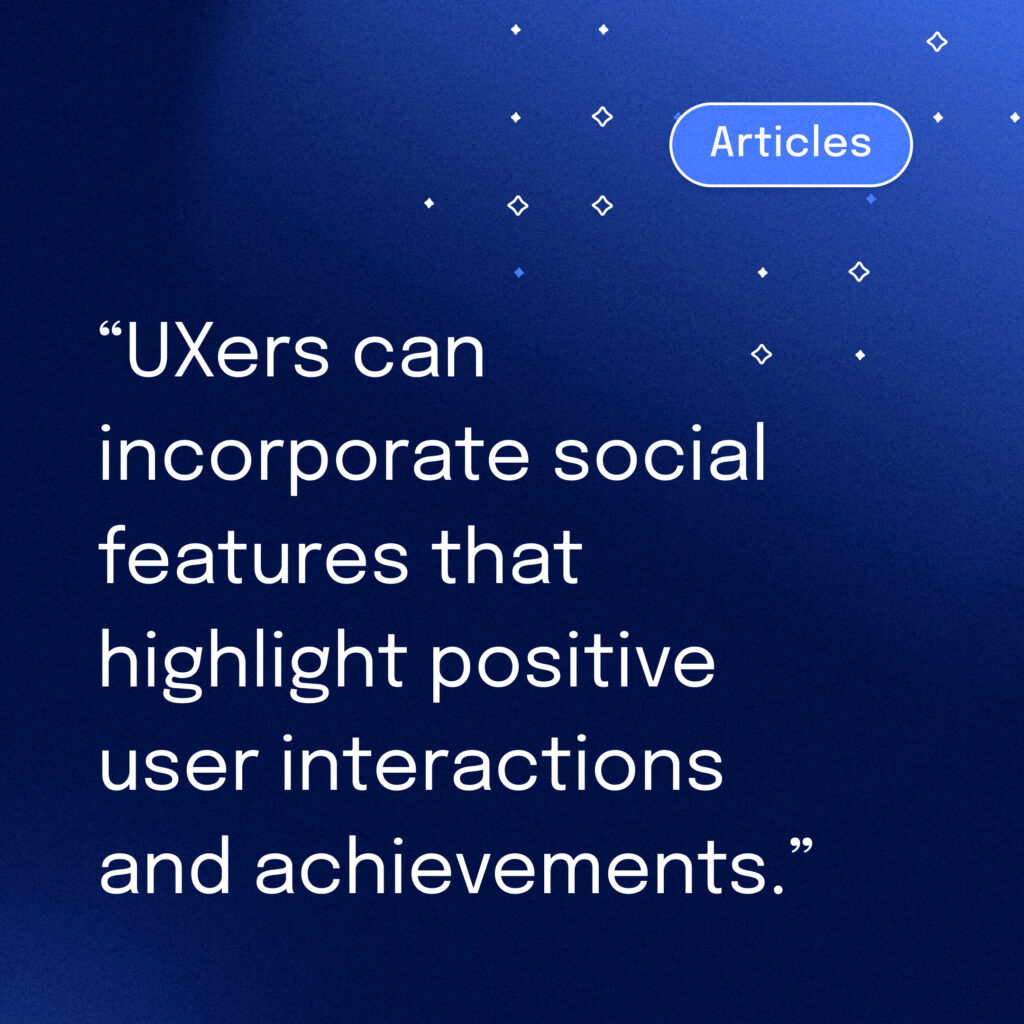By Claire Franck, Product Owner.
Sometimes having a great digital product is not enough to keep users engaged, especially when burpees are involved.
👀 How many times have we, as individuals, pledged and promised we would adopt this new healthy habit, only to end up forgetting about it a couple of days later 🧠 As we already know, the brain is lazy by default, always looking to use the least amount of energy possible. This means that adopting healthy habits is easier said than done.
In the ever-evolving landscape of apps, and particularly on those wellness-related, understanding the intricacies of user psychology is becoming the new game-changer for crafting experiences that actually resonate with users and drive meaningful (and sustainable!) behavior change 🌟
This means that, beyond the technical aspects of coding and design, exploring the motivations, emotions, and behaviors that underpin user engagement is proving to be crucial in shaping effective product strategies.
🤓 In this article we’ll explore how product development teams can leverage user psychology to drive real user behavior change and empower individuals to lead healthier lives.
The importance of psychology of behavior change
💙 At the heart of any wellness app lies the quest to drive a change in users’ behavior. By tapping into the principles of behavior change psychology, developers can gain valuable insights into the stages individuals go through when adopting new habits or making lifestyle modifications. Models such as “the stages of change” provide a roadmap for understanding where users are in their wellness journey. Knowing the difference between a user in the pre-contemplation stage, contemplating change, or maintenance stage, enables developers to design interventions that meet users where they are and support their progress towards their wellness goals 🌱 This means these new apps could actually make a difference to help people adopt healthier habits, instead of more and more endless, mindless scrolling.

🧘🏽 Cognitive biases in the wellness world
So, what is a cognitive bias you may ask? Well, according to the Cleveland Clinic: “A cognitive bias is a systematic error in thinking that can affect how we make decisions and influence how we act and behave”. Basically, our brain usually takes shortcuts to avoid any unnecessary effort. And because there isn’t an on/off switch to these biases, understanding how our brains work allows us to use it in our favor (ethically, please). So, from shaping user experiences to influencing decision-making processes, cognitive biases play a significant role in both the development and adoption of wellness apps. We’ll explore how app development teams can navigate cognitive biases to create impactful apps, as well as how UX designers can leverage these biases to facilitate behavior change and foster healthier lifestyles.
Leveraging cognitive biases in UX design:
🟠 The Endowment Effect: this is the tendency for individuals to place a higher value on objects they own, which can be translated into fitness apps by emphasizing users’ ownership of their health journey and progress. Personalized profiles, goal setting during onboarding and fitness programs can tap into users’ sense of ownership, motivating them to continue engaging with the app and making positive lifestyle changes. One size does not fit all when it comes to wellness. Each individual has unique preferences, motivations, and challenges on their wellness journey, necessitating a personalized approach to app design and intervention delivery. For example, Feelictics and other AI-based fitness apps leverage sophisticated algorithms to provide users tailored recommendations, adaptive training programs, and intelligent coaching based on real-time user data and performance.
🟠 Variable Rewards and Gamification: These tools can be incorporated to create habit forming designs. Based on Nir Eyal’s Hook Model, these habit-forming apps should leverage on 4 steps: a trigger, an action, a variable reward and an investment. For example, this could consist of a notification reminder for a daily workout as the trigger, the action of completing a class, a badge or bonus as a reward, and finally the time and effort invested in adding and personalizing their fitness goals within the app. The key is for the rewards to be varied, as the unpredictability increases user engagement. Also, adding gamification features such as leaderboards and progress trackers can help users stick to their new routine by leveraging on their sense of pride and feeling of accomplishment, tapping into users’ intrinsic motivation and desire for achievement. Asana Rebel, amongst many others, utilizes the progress bar to showcase the user’s advancement towards their weekly goal as well as the user’s streak count to promote user engagement.
🟠 The Bandwagon Effect: By leveraging the bandwagon effect, which is the tendency for individuals to adopt behaviors perceived to be popular or widely accepted by others, UX designers can incorporate social features that highlight positive user interactions and achievements. Social connections and peer support play a significant role in shaping human behavior, particularly when it comes to health-related decisions and behaviors. The influence of social norms, social comparison, and social support is why so many wellness-related apps integrate features such as community forums and social sharing functionalities or leaderboards and challenges to help users adopt a healthier lifestyle. Developers can harness the collective power of social influence to drive positive behavior change and enhance user retention in the process. For instance, a great example of this is the ginormous SWEAT community lead by the Australian trainer Kayla Itsines, which has helped so many women stick to fitter lifestyles in the long-term.
🟠 Loss Aversion: UX designers should also consider the loss aversion bias, which is the tendency for individuals to prefer avoiding losses over acquiring equivalent gains. For example, developers can nudge users towards healthier lifestyles by framing health-related choices and behaviors in terms of potential losses or missed opportunities. Goal reminders, streaks, progress alerts, and personalized recommendations can highlight the negative consequences of inaction or non-adherence, prompting users to take proactive steps towards achieving their wellness goals, leveraging psychology for the user’s benefit.
Amazing! Now we know how our users will interact with our apps and how we can actually help them reach their goals 📱 But we app developers are human too, which means, yep you guessed it: we have cognitive biases affecting our development process, too. Below you’ll see some common biases development teams should look out for.
👨🏽💻 Understanding cognitive biases in app development:
🟣 Confirmation Bias: App development teams must be vigilant against this bias, which is the tendency to seek out information that confirms preexisting beliefs while ignoring contradictory evidence. In the context of wellness apps (and any other apps really), confirmation bias can lead to the cherry-picking of data or research that aligns with the app’s intended features or benefits, potentially overlooking critical insights that could enhance user experience or effectiveness. To combat this bias, teams should prioritize rigorous user research and testing, seeking diverse perspectives and feedback throughout the development process.
🟣 Anchoring Bias: Anchoring bias occurs when individuals rely too heavily on initial information when making decisions, even when subsequent information suggests a different course of action. In wellness app development, this bias can lead to the design of features or interventions based on outdated or incomplete data, resulting in suboptimal user experiences or ineffective outcomes. To mitigate anchoring bias, developers should adopt an iterative approach to app development, continually gathering and incorporating real-world data to refine and adapt their strategies.
🟣 Availability Heuristic: The availability heuristic describes our tendency to overestimate the likelihood of events or information that are readily available in our memory. In the context of wellness apps, this bias can lead developers to prioritize features or interventions that are popular or trendy, rather than those supported by robust evidence or tailored to individual user needs. To counter the availability heuristic, developers must prioritize evidence-based practices and interventions supported by empirical research, collaborating with healthcare professionals and leveraging insights from behavioral science.
⚡️ In conclusion, understanding user psychology is a powerful tool for driving innovation and creating impactful wellness apps that empower individuals to adopt healthier habits. Cognitive biases present both challenges and opportunities for wellness app development teams and UX designers alike 🎈Let’s continue to prioritize user-centered design and evidence-based practices in the wellness tech community, driving innovation that empowers individuals to live their healthiest lives.
If you want more secrets revealed click here!
📩 If you want to know more about it, or need some mentorship on design, please feel free to reach out to us at hello@amalgama.co.
Curious for more?
Subscribe to our Newsletter
Be the first to dive into the latest tech trends!
